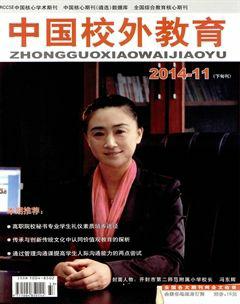Techniques of English Textbooks Adaptation
張婧雯 楊競(jìng)歐
This essay attempts to aim English teachers to evaluate and adapt the current English textbooks. According to different levels and majors of the students,English teachers can enhance the teaching materials and their teaching skills. This paper would provide several useful techniques for teachers to make evaluations and adaptations of using teaching materials.
English textbook evaluation adaptation
ⅠIntroduction
As required by education department and job necessity, English becomes one important component in college study. Textbooks are essential in language learning. Because of students with different academic backgrounds, language levels, career needs and so on, it is necessary to evaluate the suitability of current textbooks. Evaluation, which aims to check if the current course is successful and where needs to be improved, should be looked at both ‘results and ‘planning and running of the course (Nation and Macalister 2010). After evaluation, adaptation of the material should be made to improve students learning.
ⅡTechniques to adapt books
The procedure of material adaptation according to McDonough and Shaw (2003) is: firstly, identify the external or internal criteria where techniques are selected according to the aspect of the material; secondly, content can be adapted by using various kinds of techniques; thirdly, adaptation can have both quantitative and qualitative effects, which means the teacher can change the amount or methodological nature of the material; finally, techniques can be used individually or combined together. The techniques include adding, deleting, modifying, simplifying and reordering (ibid).
1.Adding
The notion of adding is putting more supplementary materials straightforward to the current one within time limits (McDonough and Shaw 2003). Adding can be divided into two categories, extending and expanding. Extending means to supply more of the same things to the material which is in quantity, while expanding means to move outside and develop the current thing in new directions which is in quality (ibid).
Furthermore, the teachers should pay attention to the overall skills of the learners. Since the textbook is with little material and exercises for listening and speaking, teachers can add some relevant material for them to train all the abilities. A vocabulary index or list is helpful for the students. However, this course book does not provide such item. It would be benefit that teachers can do a vocabulary index for the book with other useful words or phrases which are not on the book. Or they can ask students to make a vocabulary index or list contains the unknown or unfamiliar words or terminologies. Such a list can help students review and remember the words that they need to acquire in this course. Also, it is helpful for the students to do their exercises as well.
2.Deleting
Deletion can also be divided into two kinds like adding. The first one is subtracting which is simply deleting from the quantity of provided material; and the other one is abridged which is deleting in quality (McDonough and Shaw 2003).
For the easy comprehension questions, the teachers can delete them and put some new and relevant questions instead.
3.Modifying
Modification can be used at any aspectof content (McDonough and Shaw 2003).It can also be subdivided into rewriting when linguistic content needs modification and restructuring which applies to classroom management (ibid).
‘Currently the most frequently stated requirement for a change in focus is for materials to be made more communicative (McDonough and Shaw 2003). When there is just with explanatory notes and the mother tongue equivalent, teachers can modify this kind of presentation by taking out the notes and writing an exercise that helps students to develop useful ad generalized strategies for acquiring new vocabulary (ibid).
When the comprehension questions of texts can be answered by students straight from the text, these questions can be modified so that students have to interpret what they have read, or relate different sections of the text to each other (McDonough and Shaw 2003).
4.Simplifying
Simplifying can be used when the instructions and explanations, or visual length of the text are too long McDonough and Shaw 2003). Reordering can be applied in the sequence of units or parts of the course book.
Ⅲ Conclusion
During English language teaching, teachers can not only follow the provided materials, but also make adaptation for these materials with the consideration of context. Then can we provide a most suitable teaching materials and methodology for the learners to meet their leaning needs and expectations.
References:
[1]McDonough, J. and Shaw, C. Materials and Methods in ELT: A Teachers Guide. 2ndEdition. Oxford:Blackwell,2003.
[2]Nation, I.S.P. and Macalister, J. Language Curriculum Design. Abingdon: Routledge,2010.

